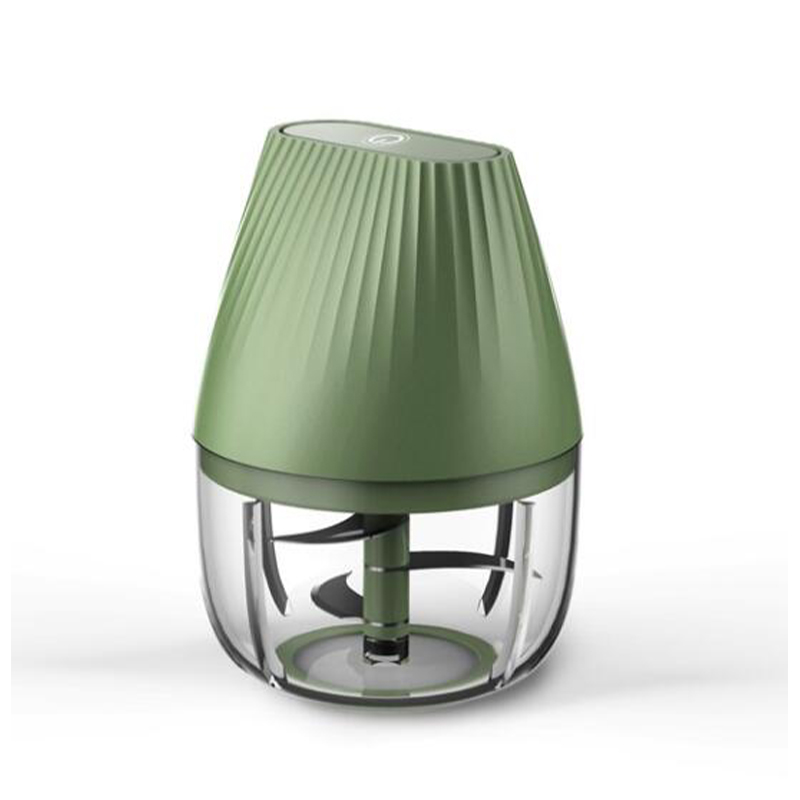Cleaning and sterilizing meat chopper components is crucial to prevent cross-contamination, maintain food safety, and comply with health regulations. Here are the ideal sanitation practices for cleaning and sterilizing meat chopper components in a commercial setting:
Cleaning Process:
1.Disassembly:
Disassembling the meat chopper is the first step in ensuring a thorough cleaning. Proper disassembly allows access to all parts, including blades, plates, and feeding trays, ensuring that no residue is left behind.
2.Pre-rinse:
Use hot water to pre-rinse the components immediately after use. High-pressure hoses are effective for removing visible meat particles and residues, preventing them from hardening and becoming more challenging to clean later.
3.Use Detergent:
Employ a high-quality, food-safe detergent mixed with warm water. This solution helps break down grease and protein residues. It's essential to follow the manufacturer's recommendations for the appropriate concentration of detergent to water.
4.Sanitizing Solution:
Immerse all cleaned components in a sanitizing solution. The solution should contain an approved sanitizing agent and be prepared according to the manufacturer's guidelines. The components should be submerged for a specific duration to ensure proper sanitation.
5.Detail Cleaning:
Thoroughly clean all components, paying close attention to intricate parts and crevices where meat particles can accumulate. Utilize brushes, scrubbers, pipe cleaners, and cotton swabs to reach difficult areas, ensuring a meticulous cleaning process.
6.Rinse Thoroughly:
After cleaning and sanitizing, rinse all components with hot water to remove any detergent or sanitizing solution residue. Proper rinsing prevents any chemical contamination of the processed meat during the next use.
7.Air Dry:
Allow all components to air dry completely in a clean and sanitized environment. Using designated racks or surfaces for drying prevents recontamination. Avoid using cloth towels, which can introduce bacteria, and ensure that the components are thoroughly dry before reassembly.
8.Reassembly:
Once all components are fully dry, reassemble the meat chopper following the manufacturer's instructions. Check that all parts are properly fitted and secure. A properly assembled meat chopper ensures optimal performance and safety during operation.
Sterilization Process:
1.Heat Sterilization:
Heat sterilization involves subjecting metal components to a specific temperature for a set duration, usually above 160°F (71°C). This process effectively kills bacteria and other pathogens. Commercial dishwashers equipped with high-temperature settings or designated sterilization ovens can be used for heat sterilization.
2.Chemical Sterilization:
Chemical sterilization utilizes food-safe sanitizing agents. Components are submerged in the chemical solution for a specified time, ensuring complete sterilization. It's crucial to follow the recommended concentration and contact time provided by the manufacturer of the sanitizing agent.
3.Steam Sterilization:
Some professional kitchens employ steam sterilization cabinets, which use high-temperature steam to sanitize equipment. Proper calibration and regular maintenance of these devices are essential to ensure effective sterilization. Components should be exposed to steam for the recommended duration to achieve thorough sterilization.
4.Regular Maintenance:
Implement a regular maintenance schedule for the meat chopper. This includes inspecting components for wear and tear, replacing damaged parts, and ensuring the equipment is functioning correctly. Regular maintenance not only ensures food safety but also extends the life of the meat chopper.
5.Record Keeping:
Maintain detailed records of all cleaning and sterilization activities. Document the date, time, and the individual responsible for the cleaning and sterilization processes. Keeping accurate records demonstrates compliance with food safety regulations and provides a reference in case of inspections.


The garlic grinder is made of ABS+AS+SS+POM and food grade stainless steel, the visualized high borosilicate cassette is removable for cleaning, safe and reliable. 40W high power motor is powerful and can hold a large amount of garlic for processing at the same time.


 English
English 中文简体
中文简体 English
English 中文简体
中文简体
















